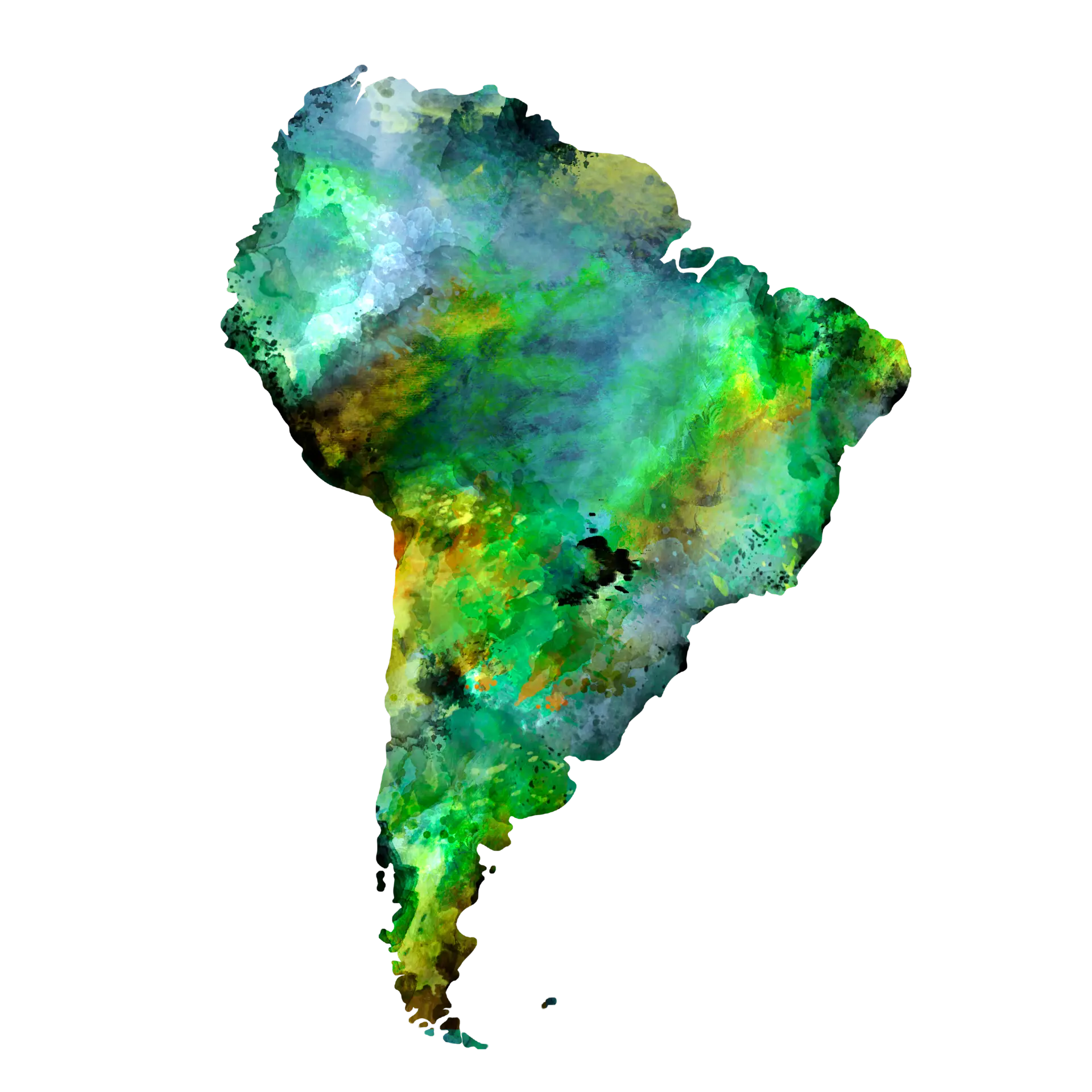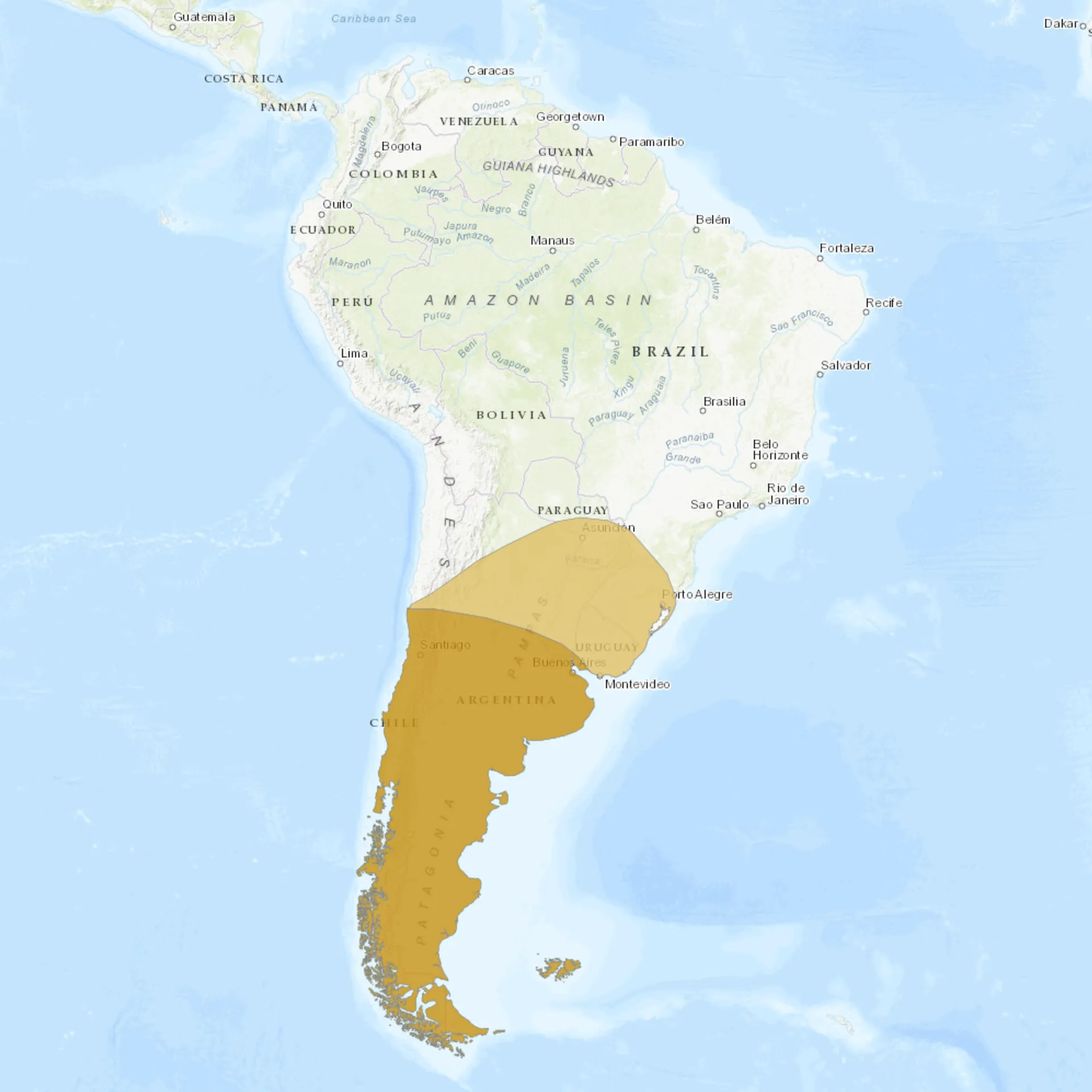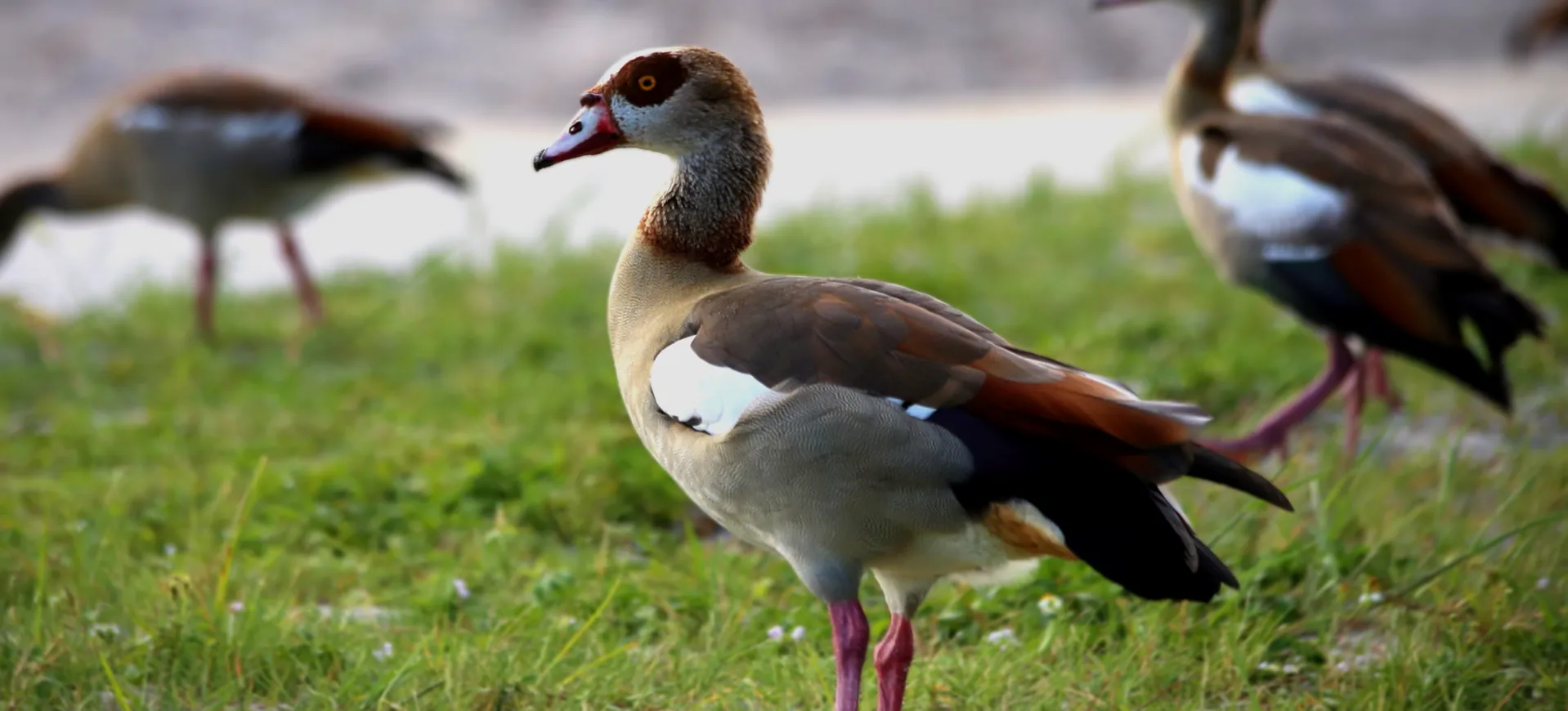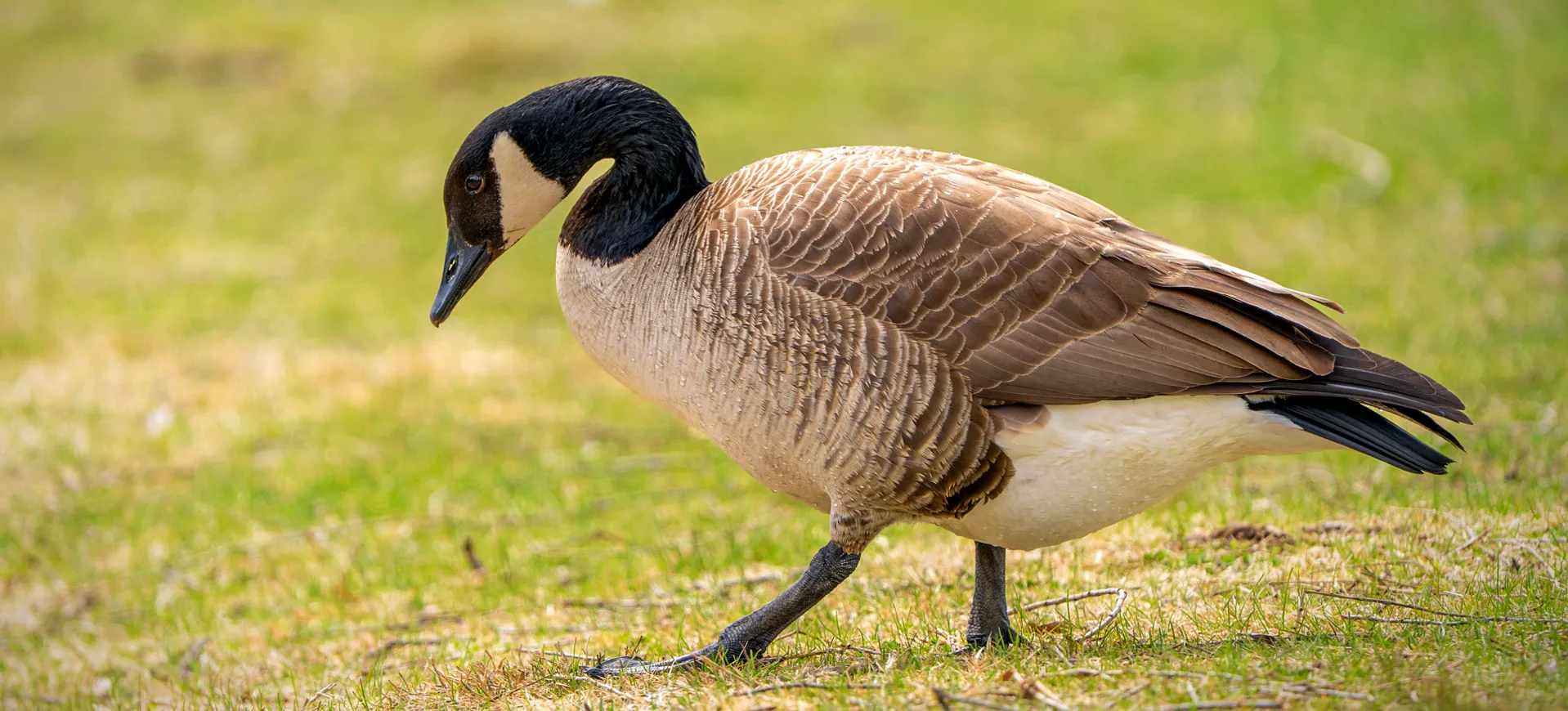Overview
The Chiloé wigeon (Mareca sibilatrix), also known as the southern wigeon, is a medium-sized dabbling duck native to South America. It is easily recognized by its striking plumage, which includes a metallic green head, white cheeks, and a black-and-white patterned body. This species is commonly found in freshwater lakes, rivers, and coastal wetlands, where it feeds on aquatic vegetation and small invertebrates. Unlike many other ducks, the Chiloé wigeon is highly social and often forms large flocks outside the breeding season.
Unlike its close relatives, the Chiloé wigeon is not strongly migratory, though some populations may move locally in response to changing water conditions. It is known for its distinctive whistling call, which is often used in communication between mates and flock members. Pairs typically remain monogamous, with both parents participating in caring for their young. Due to its adaptability, this species thrives in natural and artificial wetlands, including agricultural fields and urban ponds.
The Chiloé wigeon is widespread across Argentina, Chile, and the Falkland Islands, with occasional vagrants reaching other parts of South America. It is not considered threatened, as its population remains stable due to its ability to exploit a variety of wetland habitats. However, habitat loss from wetland drainage and pollution poses localized risks. To ensure long-term population stability, conservation efforts focus on habitat preservation, particularly in breeding areas.
Taxonomy
Kingdom
Phylum
Class
Order
Family
Genus
Species
Type
Current distribution:
Chiloé wigeons are found throughout Argentina, Chile, Uruguay, and the Falkland Islands, with their highest concentrations along the southern coasts of South America. Depending on water availability, their range extends from temperate lowlands to the foothills of the Andes. Some populations exhibit seasonal movements, shifting to lower elevations or coastal areas during winter. Occasionally, individuals are recorded as vagrants in neighboring countries such as Brazil and Paraguay.
Although not considered migratory, some Chiloé wigeons move locally in response to habitat conditions, particularly during droughts or seasonal flooding. Their adaptability to various wetland types helps maintain stable population numbers. They are commonly seen in protected reserves, agricultural landscapes, and even urban parks with suitable water sources. Conservation efforts aim to ensure the continued availability of these habitats, particularly as human expansion alters wetland ecosystems.
Physical Description:
The Chiloé wigeon is a strikingly patterned duck with a glossy green head, white cheeks, and a bluish-gray bill with a black tip. Its breast and sides are chestnut-colored with fine black barring, while the back is dark gray and the belly is white. The wings display an iridescent green speculum bordered by black and white, most visible in flight. Males and females have similar plumage, though females tend to be slightly duller in coloration.
This species has a compact body, short legs, and a relatively small head in proportion to its body. Its webbed feet are strong, allowing it to be an efficient swimmer, although it primarily forages by dabbling rather than diving. The Chiloé wigeon is slightly smaller than the Eurasian and American wigeons but shares many similar physical traits. Juveniles resemble adults but have duller coloration, lacking the vibrant green head of mature males.

Lifespan: Wild: ~10 Years || Captivity: ~20 Years

Weight: Male: 1.7–2.4 lbs (0.8–1.1 kg) || Female: 1.5–2.2 lbs (0.7–1.0 kg)

Length: Male: 18–22 in (46–55 cm) || Female: 17–20 in (43–51 cm)

Wingspan: Male & Female: 30–34 in (76–86 cm)

Top Speed: 30 mph (48 km/h)
Characteristic:
Native Habitat:
Chiloé wigeons inhabit various wetland environments, including lakes, marshes, slow-moving rivers, and coastal lagoons. They prefer shallow freshwater habitats with abundant aquatic vegetation, providing food and cover. While primarily freshwater ducks, they also tolerate brackish water and can be found in estuaries and coastal wetlands. Their ability to use natural and artificial water bodies contributes to their widespread distribution.
During the breeding season, they favor wetlands with dense shoreline vegetation, which offers shelter and nesting sites. They are commonly found in lowland areas but can also be seen at higher elevations in the Andes. Outside the breeding season, they frequently visit agricultural fields, grazing on grass and leftover crops. Their adaptability allows them to persist even in areas where wetlands have been modified by human activity.
Climate Zones:
Biomes:
Biogeographical Realms:
Continents:
Diet:
Diet & Feeding Habits:
Chiloé wigeons are omnivorous, feeding primarily on aquatic vegetation such as algae, pondweed, and grasses. They also consume small invertebrates, including mollusks, insects, and crustaceans, particularly during the breeding season when they require additional protein. Their feeding habits involve dabbling at the water’s surface or grazing on land, often in pastures and agricultural fields. They are known to forage in mixed-species groups, sometimes alongside other waterfowl such as coots and teals.
Unlike many dabbling ducks, Chiloé wigeons display cooperative foraging behavior, often feeding in pairs or small groups. They are highly adaptable and will exploit various food sources depending on availability. In human-altered landscapes, they have been observed feeding in flooded rice fields and artificial ponds. Their diet shifts seasonally, with plant material dominating in non-breeding months and a higher intake of protein-rich foods during the breeding season.
Mating Behavior:
Mating Description:
Chiloé wigeons are monogamous and form strong pair bonds that often last multiple breeding seasons. The breeding season occurs from September to December, coinciding with spring in the Southern Hemisphere. Nests are built in dense vegetation near water, usually hidden among reeds or grasses for protection. The female lays 5–8 eggs and is solely responsible for incubation, while the male remains nearby to defend the nest.
After an incubation period of approximately 24–26 days, the ducklings hatch and are immediately led to water by the mother. The young are precocial, meaning they can swim and forage for food shortly after hatching, but they remain under parental care for several weeks. Both parents assist in protecting the ducklings from predators, such as raptors and invasive mammals. Fledging occurs at around 50–60 days, after which the young gradually become independent.
Reproduction Season:
Birth Type:
Pregnancy Duration:
Female Name:
Male Name:
Baby Name:
Social Structure Description:
Chiloé Wigeons are social birds, often seen in pairs or small groups, especially outside the breeding season. They exhibit a mix of solitary and gregarious behaviors, with the balance shifting based on the time of year. During the breeding season, pairs become more territorial and less friendly, focusing on raising their young—the male and female protect the nest site and care for the ducklings.
Chiloé Wigeons can be quite social in non-breeding times, forming larger flocks that include hundreds of individuals. These flocks are often mixed with other species of ducks, showcasing their ability to coexist peacefully with other waterfowl. Social interactions within flocks include feeding together, preening, and communal roosting. Their friendly nature during the winter months plays a crucial role in their survival, as it helps them locate food and avoid predators.
Groups:
Conservation Status:
Population Trend:
The Chiloé Wigeon is a species of Least Concern by the IUCN, with a stable population trend. It is widespread throughout its range in South America, with no major threats leading to a significant population decline. In some regions, it is very common and can be seen in large flocks, especially during migration and wintering grounds.
However, habitat destruction and pollution in some areas pose potential threats to local populations. Chiloé Wigeons’ adaptability to different environments, including urban areas, has helped maintain their numbers. Conservation efforts for this species are generally focused on habitat preservation and monitoring population trends to ensure their continued stability.
Population Threats:
The main threats to Chiloé Wigeons include habitat loss and degradation, primarily due to agricultural expansion, urban development, and pollution. Wetland drainage and alteration for agriculture reduce their breeding and feeding habitats. In some areas, agricultural runoff and industrial pollution can impact water quality, affecting their food sources and health.
Climate change poses a long-term threat, potentially altering their migratory patterns and the availability of suitable habitats. Hunting and human disturbance can also impact local populations, although this is less significant than habitat-related threats. Conservation efforts must address these challenges to ensure the long-term survival of this species.
Conservation Efforts:
Conservation efforts for Chiloé Wigeons are primarily focused on habitat conservation and environmental protection. Protected areas and nature reserves are crucial in providing safe breeding and feeding grounds. Environmental regulations and wetland conservation initiatives help maintain the quality of their habitats.
There is also a focus on monitoring and research to better understand their population dynamics and migration patterns. Environmental education and awareness programs aim to reduce human disturbance and hunting pressure. Given their migratory nature, international cooperation is essential to ensure effective conservation measures across their range.
Additional Resources:
Fun Facts
- Chiloé Wigeons are known for their distinctive whistling calls, which are more musical than most other duck species.
- They have a unique behavior known as kleptoparasitism, where they steal food from other waterfowl species.
- Unlike many duck species, Chiloé Wigeons are known to feed on land and water, grazing on grass and other vegetation.
- The species is named after Chiloé Island in Chile, part of their native range.
- They are strong fliers and can migrate long distances between their breeding and wintering grounds.
- Chiloé Wigeons can hybridize with other duck species, such as the American Wigeon.
- The striking white wing patch of the Chiloé Wigeon is a key identification feature, especially visible during flight.
- They are one of the few duck species where the male stays with the female during the incubation of eggs.
- Chiloé Wigeons are adaptable to various climates, from cold Patagonian shores to warmer northern regions.
- In some South American cultures, the Chiloé Wigeon is featured in folklore and regarded as a symbol of beauty and agility.

















































































